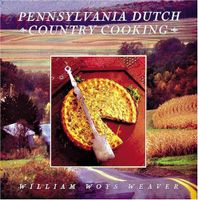Advertisement
Glossary of Pennsylvania Dutch Food Terms
Published 1993
Throughout this book, I have used a standardized form of spelling for Pennsylfaanisch based on the three-volume dialect dictionary of M.
As in Yiddish, there are no silent letters in Pennsylfaanisch, and there are no umlauted vowels as in German. The double aa sound is the same as aw in English, as in the word awning. The double ee sound is the same as ay in English, as in May—it takes the place of ä in German. The double ww sound is the same as v in English, but with a slight f sound to it. A single w is pronounced exactly like an English v. And lastly, a final e, as in Zwiwwele (plural form of “onion”), is pronounced as though it were eh in English: “TSVIH-vel-leh.” A final i, which is our diminutive equivalent of -chen in German, is pronounced like a long e in English. It is usually preceded by an l, as in Ritscherli: “RICH-er-lee.” Thus, when a soup (Supp) becomes a Sippli, or “little soup,” we are discussing a broth or, more accurately, a soup that is mostly broth, a “thin” soup. For those who want to learn Pennsylfaanisch, language kits and tape cassettes are available through the mail from Pennsylvania German Enterprises, listed.

